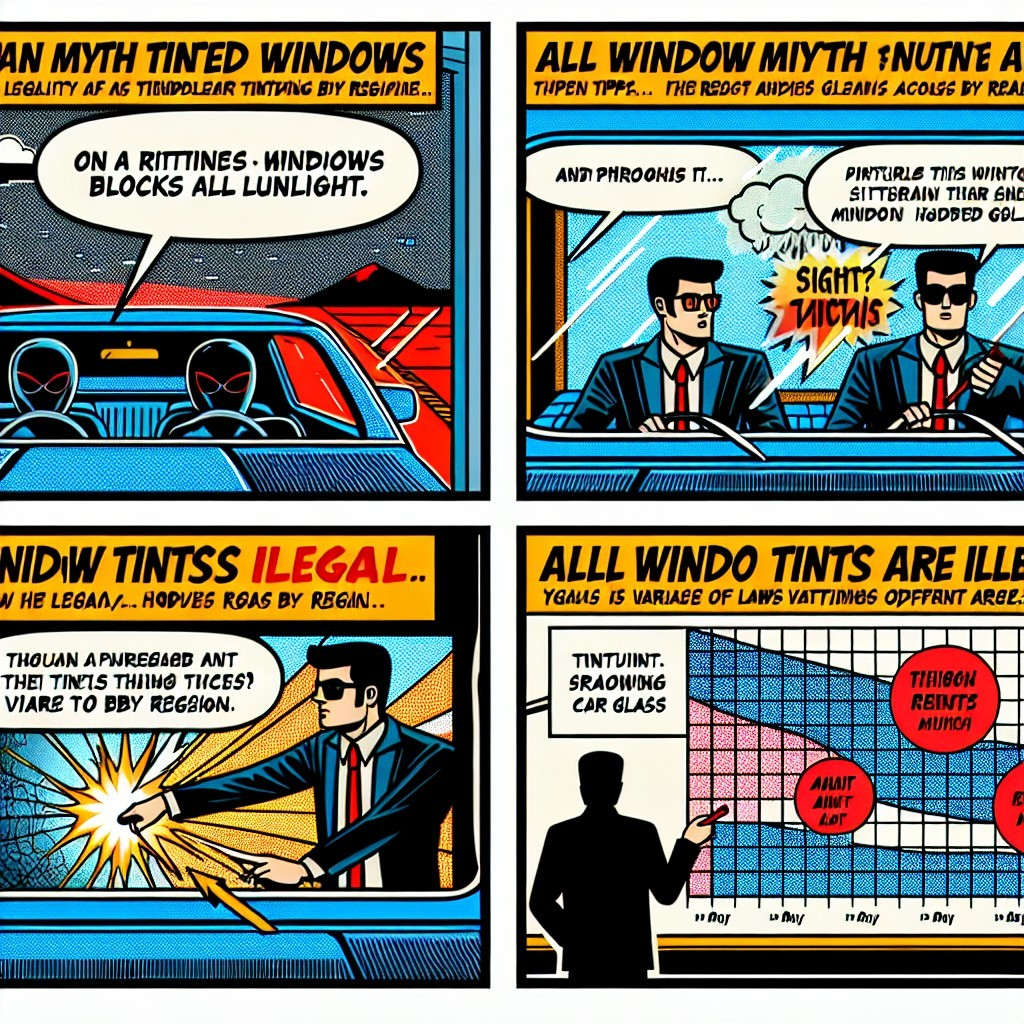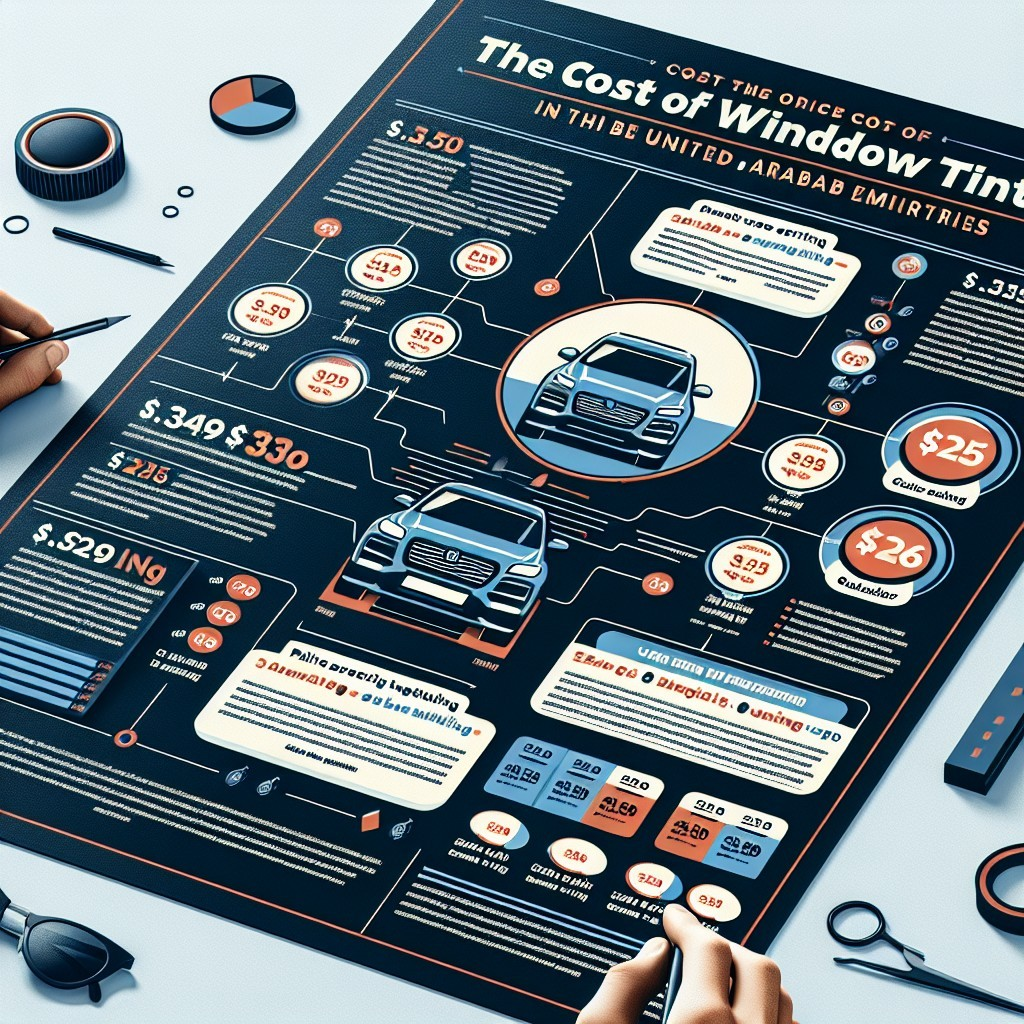When it comes to car window tinting, a swirl of misconceptions often clouds the judgment of car owners. Whether you’re considering tinting your vehicle for aesthetic appeal, heat reduction, or privacy, it’s crucial to separate fact from fiction. Buckle up as we navigate through the most common car tint myths and uncover the truth behind them.
Myth 1: All Tints Are Illegal
One of the most persistent myths is that all window tints are illegal. This is far from the truth. While it’s true that different states have specific regulations regarding the level of tint allowed on vehicles, many states permit a range of tint options. For instance, some states allow darker tints on the rear windows while requiring lighter tints on the front. Always check local laws to ensure compliance before making a decision.
Myth 2: Darker Tints Offer Better Protection
It’s a common belief that the darker the tint, the better the UV protection. However, this isn’t entirely accurate. While darker tints can reduce glare and enhance privacy, they do not inherently offer better UV protection than lighter tints. The effectiveness of UV protection depends more on the quality of the tint film rather than its darkness. Look for films that specifically advertise UV-blocking capabilities for optimal protection.
Myth 3: Tinted Windows Are More Likely to Shatter
Another popular myth suggests that tinted windows are more susceptible to shattering. In reality, high-quality tint films are designed to hold shattered glass together. In the event of an accident, tinted windows can help prevent shards from flying into the vehicle, potentially reducing injuries. However, it’s important to note that extremely dark tints can impair visibility, leading to accidents, which is a separate concern.
Myth 4: Tinting Will Ruin Your Car’s Interior
Some believe that window tinting can damage a car’s interior. On the contrary, quality window tint can actually help preserve the interior by blocking harmful UV rays that cause fading and deterioration of upholstery and dashboard materials. A good tint not only enhances privacy and comfort but extends the life of your car’s interior as well.
Myth 5: DIY Tints Are Just as Good as Professional Installation
While DIY tint kits might seem like a cost-effective solution, they often fall short of professional results. Poor application can lead to bubbling, peeling, and uneven coverage, which can detract from the car’s aesthetics and functionality. Professional installers have the expertise and tools necessary to ensure a flawless finish and compliance with local regulations.
Myth 6: Tinted Windows Are Only for Luxury Cars
Many people assume that tinting is reserved for high-end vehicles. This misconception couldn’t be further from the truth. Car window tinting is accessible and beneficial for all vehicle types, whether you drive a sedan, SUV, or hatchback. In fact, more budget-friendly cars can benefit significantly from tinting, enhancing comfort and style without breaking the bank.
Myth 7: Tints Fade Quickly
It’s often said that tinted windows will fade and lose effectiveness over time. However, this largely depends on the quality of the tint film used. High-quality films are designed to resist fading and maintain their color integrity for years. Investing in a reputable brand can save you from the hassle of re-tinting sooner than expected.
As we’ve explored, many myths surrounding car window tinting can lead to confusion and poor decisions. By debunking these misconceptions, we empower vehicle owners to make informed choices that enhance their driving experience. Whether for privacy, style, or UV protection, window tinting can offer numerous benefits when done correctly. So, consult a professional, understand your local laws, and enjoy the advantages that come with tinted windows!
Remember: knowledge is power, and in the world of car tinting, it’s the key to unlocking a safer, more enjoyable ride.
Myth 8: Tints Make It Harder to See at Night
A frequent concern among drivers considering tinting is the belief that tinted windows will severely limit nighttime visibility. While it is true that some darker tints can affect visibility, particularly in low-light conditions, many manufacturers offer options that maintain clear sightlines both day and night. The key is choosing the right tint level that complies with regulations and suits your driving habits. Opt for a quality film designed for clarity, and you can enjoy the benefits of tinting without compromising safety.

Myth 9: Tints Are Just a Fad
Some dismiss window tinting as merely a trend that will fade away. However, window tinting has been around for decades and continues to evolve with advancements in technology and design. Drivers appreciate the practical benefits—such as heat reduction, glare reduction, and UV protection—making it a timeless upgrade rather than a passing fad. As long as people value comfort and protection while driving, window tinting is here to stay.
Myth 10: Tinted Windows Increase Insurance Premiums
Many believe that having tinted windows will automatically raise their car insurance premiums. While it’s true that modifications to a vehicle can sometimes impact insurance rates, many insurance companies recognize the safety benefits of window tinting. In fact, some insurers might even offer discounts for vehicles with high-quality tint that enhances safety. It’s always wise to consult with your insurance provider to understand how tinting could affect your specific policy.
Myth 11: You Can’t Roll Down Tinted Windows for a Long Time
There’s a myth that rolling down tinted windows frequently can cause damage to the tint film. The reality is that once the tint has fully cured—typically within a few days after installation—rolling down the windows should not pose a problem. However, it’s essential to follow the care instructions provided by the installer to ensure the longevity and integrity of the tint.
Myth 12: All Tints Are Created Equal
Not all window tints are made the same. The market is flooded with different types of films, from basic dyed films to high-performance ceramic and metalized options. Each type offers varying levels of heat rejection, UV protection, and durability. Investing in a reputable brand and consulting with a professional installer will ensure you receive a product suited to your needs.
Myth 13: Car Tinting is a One-Time Investment
Many assume that once they’ve tinted their windows, they won’t have to think about it again. However, over time, tint can fade or become damaged due to environmental factors, improper cleaning, or poor-quality materials. Regular maintenance and occasional re-tinting will keep your windows looking sharp and performing well. It’s important to choose a high-quality film and follow care guidelines to extend the lifespan of your tint.
With these myths debunked, it’s clear that car window tinting offers a myriad of benefits when approached correctly. Whether you’re looking to enhance your vehicle’s appearance, protect its interior, or improve your driving experience, informed decisions can lead to satisfying outcomes. As you consider tinting your vehicle, remember to consult with professionals, adhere to local regulations, and invest in quality materials. Embrace the advantages of car window tinting and drive with confidence, knowing the truth behind the myths!


I always thought darker tints were the best for UV protection. Thanks for explaining how quality matters more than darkness!
This is a must-read for anyone considering window tinting. The facts presented here are very helpful and eye-opening!
I never knew that quality tint could actually protect the interior of my car. This article really changed my perspective on window tinting.
Great job debunking common myths about car window tinting! It
This article clears up so many misconceptions about car window tinting! I had no idea that not all tints are illegal. Very informative!
I loved this read! The myth about tinted windows shattering easily was something I believed for so long. Great insights!
Fantastic article! I appreciate how it emphasized checking local laws before tinting. Knowledge is power when it comes to car modifications.